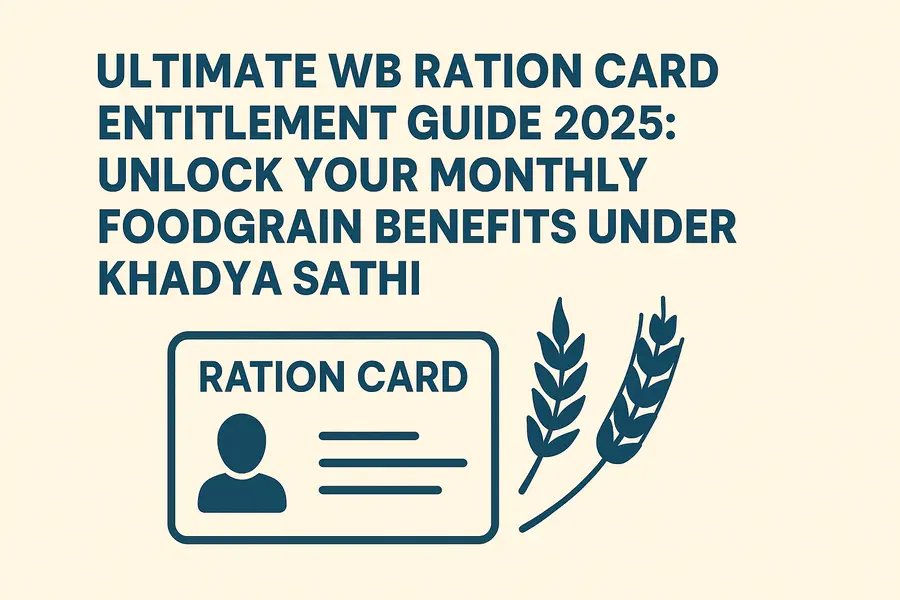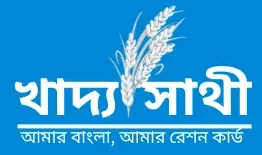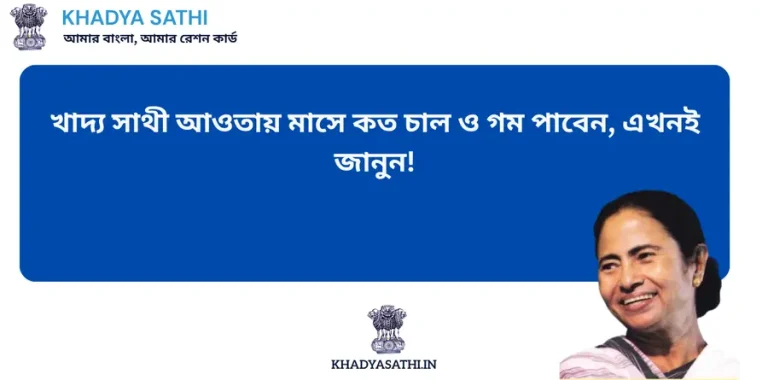The government of West Bengal has taken several strategic initiatives over the years to ensure food security for its citizens, particularly those from economically weaker sections. One of the most impactful schemes in this regard is the Khadya Sathi program, which guarantees subsidized or free food grains to eligible residents across the state. A key component of this initiative is the WB Ration Card Entitlement system.

Under this framework, beneficiaries are provided monthly allocations of rice, wheat, or fortified atta based on the type of ration card they hold and, in some cases, the area in which they reside. This article provides a detailed explanation of how the entitlement system works, who benefits from it, and what makes it a cornerstone of the state’s public distribution network.
Understanding WB Ration Card Entitlement
The WB Ration Card Entitlement refers to the quantity and type of essential food foodgrains that are distributed to ration cardholders through the Public Distribution System (PDS) in West Bengal. Each category of ration card corresponds to a specific level of food grain support. The government identifies these categories based on income status, vulnerability, and specific regional hardships.
Beneficiaries under this system receive their entitlements monthly from Fair Price Shops (FPS) located in their area. The aim is to ensure that no citizen, especially from marginalized communities, goes without basic food support. The entitlements are mostly provided free of cost under the Khadya Sathi scheme, making it a critical safety net for millions.
Key Ration Card Categories in West Bengal
The entitlement a person or household receives is closely tied to the category of ration card they possess. The Department of Food and Supplies has defined four major types of ration cards under the WB Ration Card Entitlement structure:
- AAY (Antyodaya Anna Yojana) – Designed for the poorest of the poor, this category includes households with no steady income, elderly persons with no support, and other severely disadvantaged groups.
- PHH (Priority Household) and SPHH (Special PHH)—These are intended for families living below the poverty line. The government uses socio-economic indicators to determine eligibility under these categories.
- RKSY-I (Rajya Khadya Suraksha Yojana-I)—This category covers households that do not fall under national food security norms but still require affordable food support due to low or irregular incomes.
- RKSY-II (Rajya Khadya Suraksha Yojana-II)—This is a limited-benefit category created for slightly better-off families who may not require full support but still benefit from a small quantity of subsidized food grains.
Each of these card types receives different quantities of rice and wheat on a monthly basis under the Khadya Sathi framework.
WB Ration Card Entitlement (General Scheme – 2025)
| Beneficiary Group | Rice Provided (Monthly) | Wheat or Atta (Monthly) |
|---|---|---|
| Antyodaya Families (AAY) | Fixed 21 kg per household | Either 14 kg wheat or 13.3 kg fortified atta per household |
| Priority Groups (PHH / SPHH) | 3 kg per individual | 2 kg wheat or 1.9 kg fortified atta per individual |
| RKSY-I Card Holders | 5 kg per person | Not applicable |
| RKSY-II Card Holders | 2 kg per person | Not applicable |
Special Packages under WB Ration Card Entitlement Scheme
| Targeted Zone | Applicable Card Category | Regular Allocation | Supplementary Benefit (Rice) |
|---|---|---|---|
| Junglemahal Districts | AAY Families | As per AAY (21 kg rice + wheat) | Extra 11 kg per member (if family has more than 3 members) |
| PHH Households | As per PHH (rice + wheat/atta) | Additional 6 kg per ration card | |
| RKSY-I | 5 kg per head | Additional 6 kg per ration card | |
| Hills Region | AAY Families | Regular 21 kg rice + wheat | Extra 11 kg per member (if household size exceeds 3) |
| RKSY-I | 5 kg rice | Additional 6 kg per card | |
| Tea Garden Sectors | AAY Families | Standard 21 kg rice + wheat/atta | No additional support beyond base entitlement |
| RKSY-I | Flat 35 kg of rice per household | Not applicable | |
| Toto Community Area | Any cardholder | Based on existing card category | Extra 11 kg rice for flagged individual beneficiaries |
| Aila-Flagged Zone | Any category | Entitlement as per card type | 16 kg rice per flagged household |
| Singur-Flagged Zone | All eligible families | As per card category | 16 kg rice per flagged household |
While the base entitlement is available to all eligible ration cardholders across the state, the West Bengal government has recognised the need for enhanced food support in certain regions that face geographical, social, or economic challenges. These areas have been categorised as flagged zones under the Khadya Sathi initiative.
Some of these areas include:
- Junglemahal—Known for tribal populations and forest terrain, families here often receive additional rice support beyond their standard entitlement.
- Hilly regions—Residents of Darjeeling, Kalimpong, and nearby areas receive extra rations due to terrain-induced accessibility issues.
- Tea Garden areas— Workers and families dependent on tea plantations receive region-specific food packages to offset irregular incomes.
- Toto community villages— As an endangered tribal group, the Toto population receives tailored ration allocations.
- Aila and Singur flagged zones—These are disaster-affected areas where residents have been marked for special rice support beyond their usual entitlements.
These extra provisions are built into the WB Ration Card Entitlement matrix and are flagged automatically in the digital system. Beneficiaries do not need to apply separately but must ensure that their card and Aadhaar are properly linked to avail of the benefits.
Digital Access and Verification
The West Bengal government has modernised its ration distribution through the WBPDS portal (https://wbpds.wb.gov.in). Residents can now:
- Search for their ration card details online
- Check monthly entitlement based on card category
- Download digital ration cards
- Track food grain allocation and delivery status
- Submit grievances and check Aadhaar seeding status
This transparency allows every household to be aware of their WB Ration Card Entitlement and ensures smoother functioning of the Public Distribution System.
Additionally, SMS alerts are sent to beneficiaries whose mobile numbers are linked to their ration cards. These alerts inform users about the arrival of rations, delivery schedules, or updates from the Food and Supplies Department.
Eligibility and Application Process
To receive food grains under the WB Ration Card Entitlement system, individuals must first apply for a valid ration card through the Duare Sarkar camps or online via the WBPDS portal. The basic documents required include
- Aadhaar card (for all family members)
- Voter ID
- Proof of residence (electricity bill, rent agreement, etc.)
- Recent passport-sized photographs
- Income certificate, if applicable
Once verified, applicants are issued a ration card under the appropriate category based on eligibility criteria. Those already holding cards can also apply for category correction or region-based inclusion if they qualify for additional benefits.
WB Ration Card Entitlement Guide 2025
The WB Ration Card Entitlement framework stands as a significant pillar of the Khadya Sathi scheme, providing essential food security to the people of West Bengal. By ensuring targeted and need-based allocation of food grains, the government not only addresses hunger but also strengthens the nutritional foundation of millions of families.
With digital governance, transparent operations, and inclusive regional coverage, the state has successfully made its public distribution system more equitable and responsive. All eligible citizens are encouraged to check their entitlements regularly, ensure Aadhaar and mobile number linkage, and stay informed about new updates from the Food and Supplies Department.
Read More: Official Guidelines for Form 15: Authorize Nominee for Ration Collection Due to Old Age or Inability
Read More: Find the best hotel tips, local travel guides, and stay recommendations for your next trip to Puri. Visit PuriHotelBooking.co.in for helpful updates before your journey
https://firsthomeownergrants.com : The First Home Owner Grant is a one-time government payment in Australia to help first-time buyers purchase or build a new home.


Pingback: WB Ration Card Monthly Transaction 2025 – Instantly Check Food Grain Records By RC Number | KHADYA SATHI